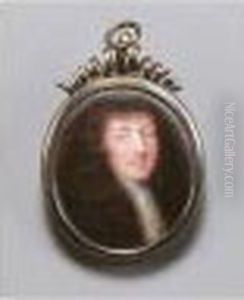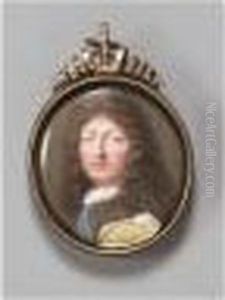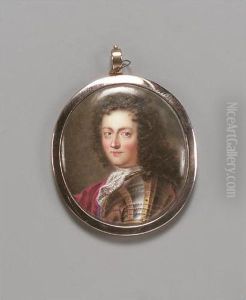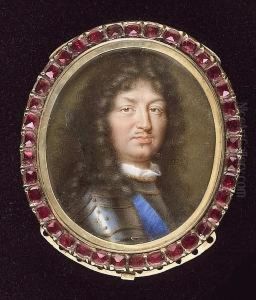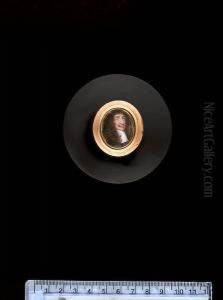Jean I Petitot Paintings
Jean I Petitot was a renowned enamel painter of the 17th century, born in Geneva, Switzerland, in 1607. Coming from a family of enamelers, Petitot initially trained under his father, Pierre Petitot, before moving to France to further hone his craft. His work caught the attention of the French court, and he eventually became the official enamel painter to King Louis XIV. Petitot's exquisite miniatures, often portraits of nobility and royalty, are celebrated for their meticulous detail, vibrant colors, and the lifelike quality of the figures he depicted.
Petitot's journey to prominence began in earnest when he moved to Paris, where he came under the tutelage of the painter Simon Vouet. It was during this period that Petitot perfected his technique in enamel painting, a demanding medium that requires the application of colored glass powders to a metal surface, which is then fired to fuse the glass to the metal. His mastery of this technique was unparalleled, and his ability to capture the nuances of facial expressions and the intricacies of attire in such a small format was unmatched.
In the 1640s, Petitot's talents took him to the court of Charles I of England, where he worked alongside his brother-in-law, Jacques Bordier, in producing enamel portraits. However, the outbreak of the English Civil War forced Petitot to return to France, where he would spend the majority of his career. Back in France, he continued to receive commissions from the French aristocracy and royalty, including portraits of Louis XIV and members of his court. These works solidified Petitot's reputation as the foremost enamel painter of his time.
Petitot's legacy is not only in the beauty and precision of his portraits but also in the advancement of the enamel painting technique. He developed new methods, including the use of a white enamel background that enhanced the luminosity and color depth of his portraits. His influence extended beyond his lifetime, inspiring future generations of enamel painters.
Jean I Petitot passed away in 1691, leaving behind a body of work that continues to be admired for its technical brilliance and artistic beauty. Today, his miniatures are held in some of the world's leading art museums, testament to his enduring significance in the history of European art.
